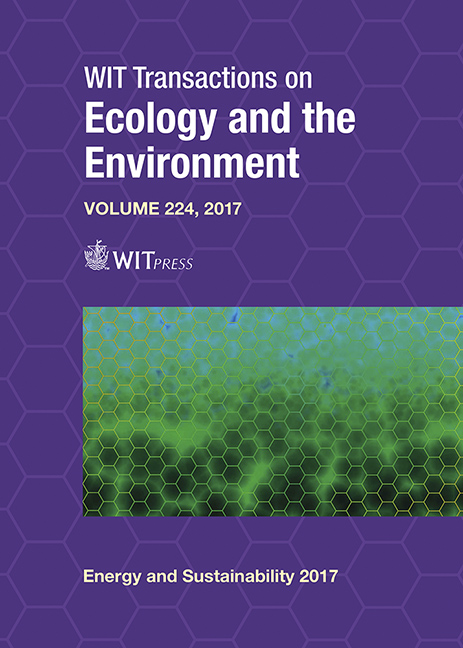CALCIUM EXTRACTION FROM ESTONIAN INDUSTRIAL WASTES BASED ON AMMONIUM SOLVENTS
Price
Free (open access)
Transaction
Volume
224
Pages
12
Page Range
465 - 476
Published
2017
Paper DOI
10.2495/ESUS170431
Copyright
WIT Press
Author(s)
KADRIANN TAMM, REGIINA VIIRES, REIN KUUSIK, MAI UIBU
Abstract
In Estonia electricity production is based mainly on local oil shale, the latter has been the country’s most important mineral resources throughout the last century, up to today. In addition, the municipal solid waste incineration (MSWI) based heat and power production has developed rapidly. Industrial wastes from combustion processes are often rich in calcium and could be used as raw materials for CO2 sequestration and calcium carbonate production. Batch dissolution experiments were carried out to investigate Ca extraction from industrial wastes using ammonium salt solvents (NH4Cl, NH4NO3 and CH3COONH4). The dissolution equilibrium and dynamics of the main species was studied from the aspects of Ca extraction selectivity and environmental safety. Conductivity and pH change in the studied systems depends mainly on the solvent (its electrolyte ionic strength and ion mobility), addition of ashes basifies the systems. Test results indicated that Ca2+ ion extraction was noticeably enhanced by ammonium salts as compared to water systems, using NH4NO3 solution gave the best results (extraction degree up to 95%). A simplified leaching mechanism for ash-solvent systems was presented, the latter can be used for future theoretical calculations. The study was focused on recovering of Ca from Estonian waste ashes, development of calcium carbonate as a commercial by-product will be the next step.
Keywords
oil shale ash, municipal solid waste incineration ash, precipitated calcium carbonate, utilization, CO2 sequestration





